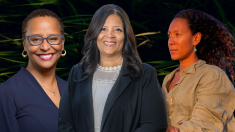The Root’s Contributing Editor Steven Gray offers a comprehensive synopsis of Tavis Smiley and Cornell West’s latest tag-team project, the book The Rich and the Rest of Us: A Poverty Manifesto.
If there’s any doubt that the economic crisis persists, consider the takeaways from recent headlines: The official unemployment rate remains 8.2 percent. One in six Americans — nearly 52 million people — receives food stamps, even as Republican legislators in Washington and state capitals push austere cuts to social programs.
In a Gallup survey released Monday, two-thirds of Americans say they know someone who has been laid off in the last six months — the highest share in the venerable polling firm’s history. But the biggest takeaway is this: The gap between the rich and poor in the United States is not only worsening; it’s also greater than those in many other countries. Few people are connecting the dots.
Enter The Rich and the Rest of Us: A Poverty Manifesto — a richly insightful, slightly academic book released this month by talk-show host Tavis Smiley and professor Cornel West. The two men have been friends for 25 years. The current book project was born last summer during the duo’s 18-city Poverty Tour, which extended from a Native American reservation in Minnesota to Appalachia and Washington, D.C. The tour came just as the Congressional Black Caucus launched a series of job fairs.
Both efforts became flash points in an unsurprisingly fleeting national conversation about income inequality, and in particular how the economic crisis is afflicting African Americans. The new book not only documents the Smiley-West tour but also aims to restart a meaningful conversation about poverty, especially as the 2012 general election takes shape.
“We’re getting some traction,” Smiley told The Root recently. Since last summer’s tour, the authors have held a series of public conversations on the causes of poverty — and potential solutions — with leading figures in business and finance.
They’ve identified “the new poor” — people who, Smiley observes, “were once solidly middle class but who’ve lost their homes, lost their 401(k) and are just trying to hold on.” The book notes that 1 percent of America’s wealthiest people — those earning $380,000 or more each year — control 42 percent of the country’s wealth.













